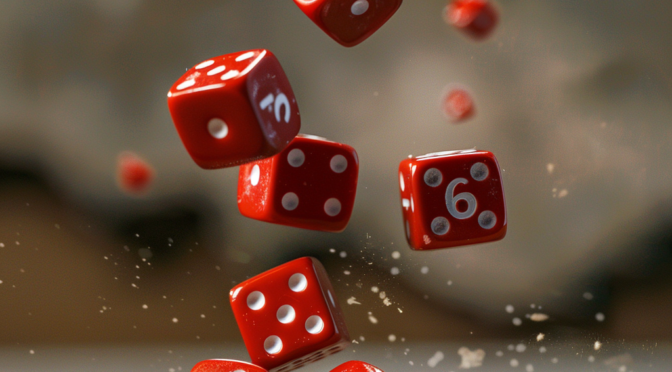Some abilities, powers, or effects call for a dice flip when a certain number is rolled during a skill check. A dice flip is also called a difference flip. This is written as “Flip-6” or “F6”, meaning that if any die on a roll shows a 6, it should be flipped to a 1 before being totaled to figure result points.
There are six different values for a difference flip: Flip-1 / F1, Flip-2 / F2, Flip-3 / F3, Flip-4 / F4, Flip-5 / F5, Flip-6 / F6.
With standard casino dice, the opposite sides of a six-sided die always add up to 7. When the die is flipped, the final number will be the difference between 7 and the original number. The number pairs are 1:6, 2:5, and 3:4.
Other Dice and the Difference Flip
Not all dice are six-sided; a standard set of role-playing dice include four-sided, six-sided, eight-sided, ten-sided, twelve-sided, and twenty-sided dice. When the difference flip is applied to any die, the result must always equal the difference between the number rolled and a value one greater than the highest value of the die. Not all dice are designed with the same rotational symmetry or value distribution pattern, so that physically flipping a die does not yield consistent results between manufacturers. “Flipping” mathematically is the only way to get a consistent result.
| d4 | d6 | d8 | d10 | d12 | d20 |
|---|---|---|---|---|---|
| 1:4 | 1:6 | 1:8 | 1:10 | 1:12 | 1:20 |
| 2:3 | 2:5 | 2:7 | 2:9 | 2:11 | 2:19 |
| 3:4 | 3:6 | 3:8 | 3:10 | 3:18 | |
| 4:5 | 4:7 | 4:9 | 4:17 | ||
| 5:6 | 5:8 | 5:16 | |||
| 6:7 | 6:15 | ||||
| 7:14 | |||||
| 8:13 | |||||
| 9:12 | |||||
| 10:11 |
